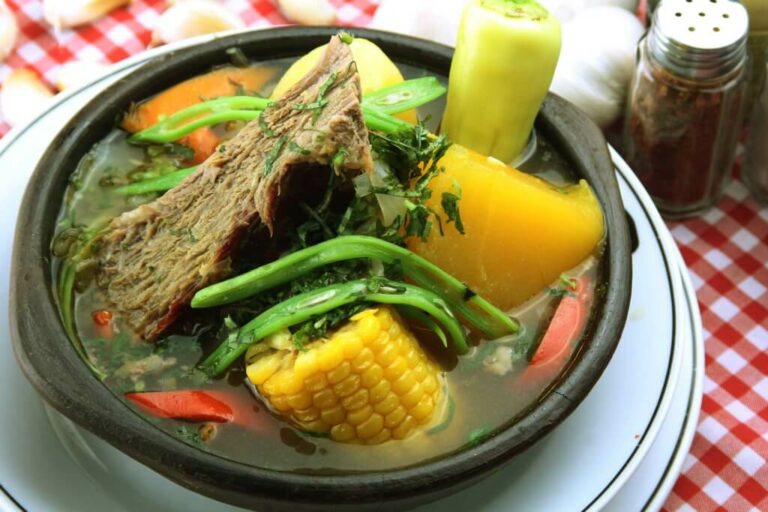Introduction: Discovering Mapuche cuisine
Mapuche cuisine refers to the traditional cooking techniques and ingredients of the indigenous Mapuche people of Chile. It is a cuisine that has been passed down through generations and has survived the influence of colonization and modernization. Mapuche cuisine is known for its use of natural and locally sourced ingredients, as well as its emphasis on communal cooking and sharing.
Although Mapuche cuisine has been around for centuries, it has only gained recognition in recent years. This has been partly due to the efforts of chefs and food activists who are working to preserve and promote indigenous culinary traditions in Chile and beyond.
The history of Mapuche people and food traditions
The Mapuche people have a long history of agriculture and hunting, which has shaped their cuisine. They have traditionally relied on crops such as quinoa, corn, and beans, as well as native fruits and vegetables such as maqui berries and potatoes. Hunting and fishing were also important sources of food.
Mapuche cuisine has been influenced by both indigenous and Spanish traditions. The arrival of the Spanish in the 16th century brought new ingredients such as wheat, dairy, and beef, which were incorporated into Mapuche cuisine over time. However, Mapuche cooking techniques and the use of indigenous ingredients remained a central part of the cuisine.
The role of Mapuche cooking techniques in Chilean cuisine
Mapuche cooking techniques, such as the use of clay pots and wood-fired ovens, have had a significant impact on Chilean cuisine. These techniques have been adopted by non-indigenous chefs and are now commonly used in Chilean restaurants. For example, the use of clay pots for cooking stews and soups is a popular technique in Chilean cuisine.
In addition, Mapuche cuisine emphasizes communal cooking and sharing. This tradition has also influenced Chilean cuisine, particularly in the preparation of traditional dishes such as asado (barbecue) and cazuela (stew).
Mapuche ingredients and their use in Chilean dishes
Mapuche ingredients, such as quinoa, maqui berries, and piñones (pine nuts), have become increasingly popular in Chilean cuisine. These ingredients are now commonly found in supermarkets and used in both traditional and modern dishes.
For example, quinoa has become a staple in Chilean cuisine and is used in salads, stews, and even desserts. Maqui berries are used to make a popular drink called jugo de maqui, which is believed to have health benefits. Piñones are often used as a garnish for dishes such as pastel de choclo (corn pie).
Mapuche-inspired recreations of traditional Chilean dishes
Chefs in Chile are increasingly incorporating Mapuche ingredients and cooking techniques into traditional Chilean dishes. For example, the popular dish curanto, which traditionally consists of seafood, meat, and vegetables cooked in a pit oven, is now often prepared using indigenous ingredients such as quinoa and piñones.
In addition, chefs are taking inspiration from Mapuche cuisine to create new dishes that incorporate traditional ingredients and techniques. For example, chef Rodolfo Guzmán’s restaurant Boragó in Santiago features dishes such as “trenza de cochayuyo,” which is a braid of seaweed served with quinoa and other indigenous ingredients.
The impact of Mapuche cuisine on Chilean gastronomy
Mapuche cuisine has had a significant impact on Chilean gastronomy, both in terms of ingredients and cooking techniques. Indigenous ingredients such as quinoa and maqui berries have become increasingly popular, and Mapuche cooking techniques are now widely used in Chilean restaurants.
In addition, the recognition of indigenous culinary traditions has led to a greater appreciation of Chilean cuisine as a whole. Chefs are now incorporating indigenous ingredients and techniques into modern dishes, creating a fusion of traditional and contemporary cuisine.
The cultural significance of Mapuche culinary traditions in Chile
Mapuche culinary traditions are an important part of Chilean culture and identity. The recognition and preservation of these traditions is seen as a way to honor the history and heritage of the Mapuche people.
In addition, the promotion of Mapuche cuisine is seen as a way to support indigenous communities and to create economic opportunities for them. By highlighting the value of indigenous ingredients and cooking techniques, chefs and food activists are helping to raise awareness of the importance of preserving traditional knowledge and practices.
Opportunities for the promotion and preservation of Mapuche cuisine
There are many opportunities for the promotion and preservation of Mapuche cuisine. One way is through the creation of culinary schools and training programs that focus on indigenous cooking techniques and ingredients.
In addition, the development of eco-tourism initiatives that showcase indigenous cuisine and culture can provide economic opportunities for indigenous communities. Finally, the recognition of indigenous culinary traditions in international food competitions and events can help to raise awareness and promote the value of Mapuche cuisine.

